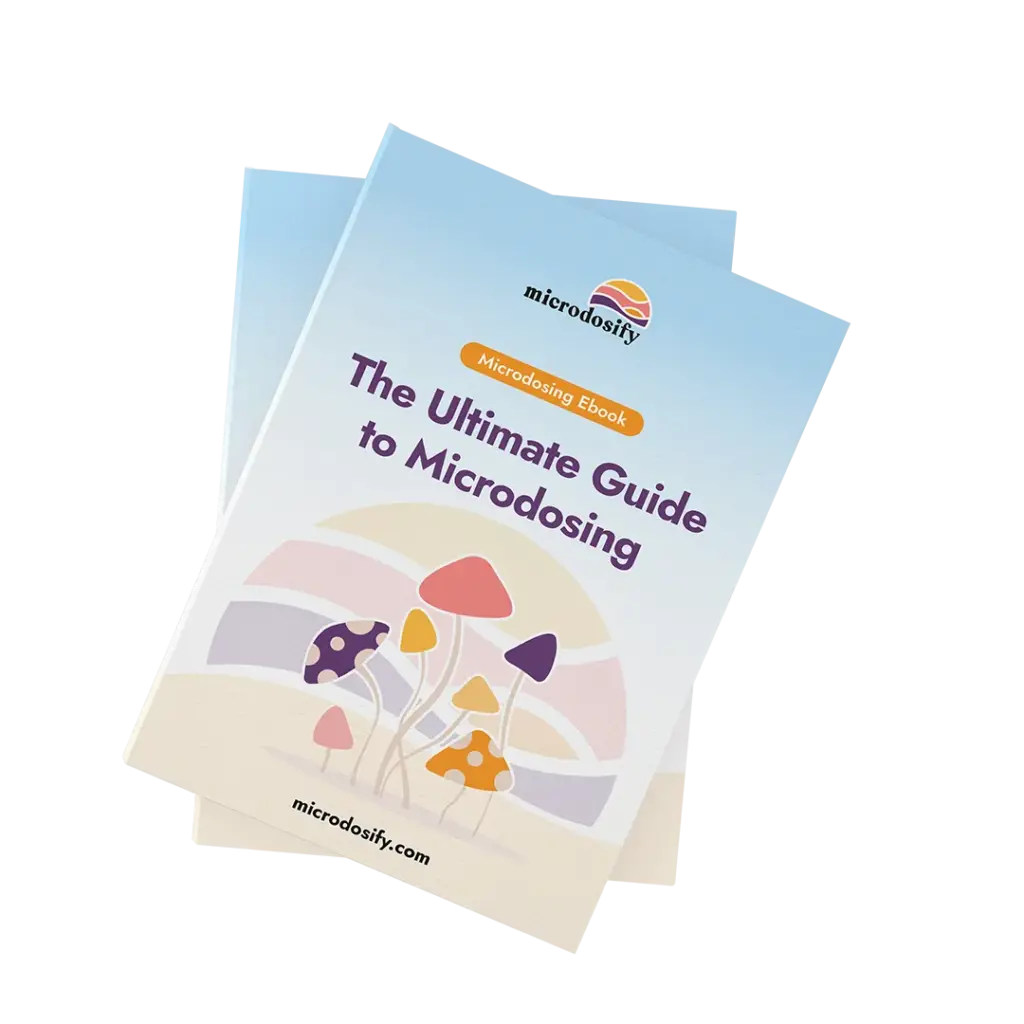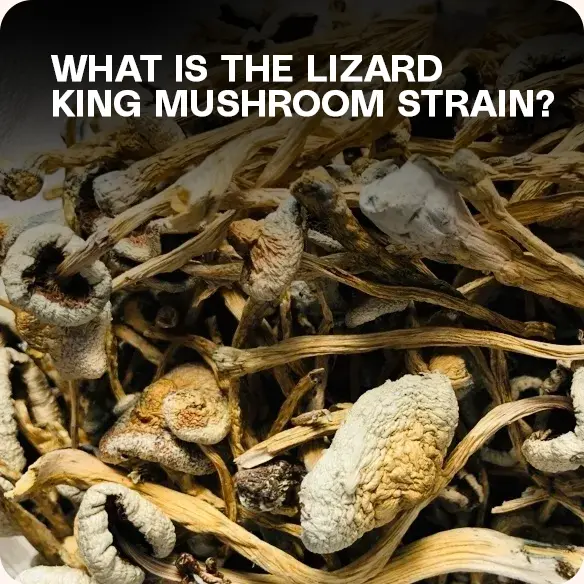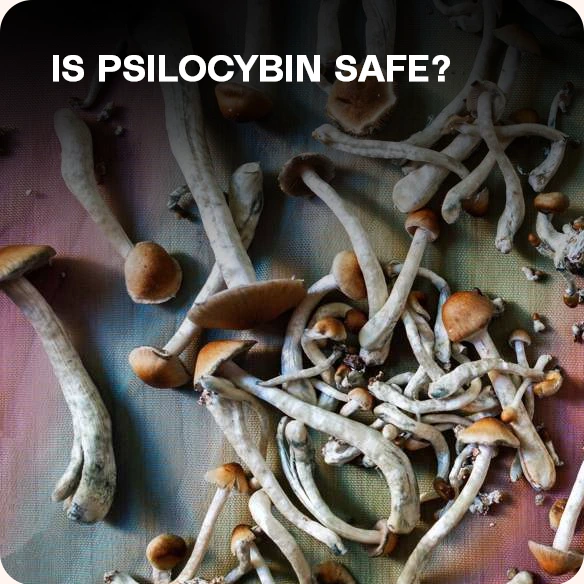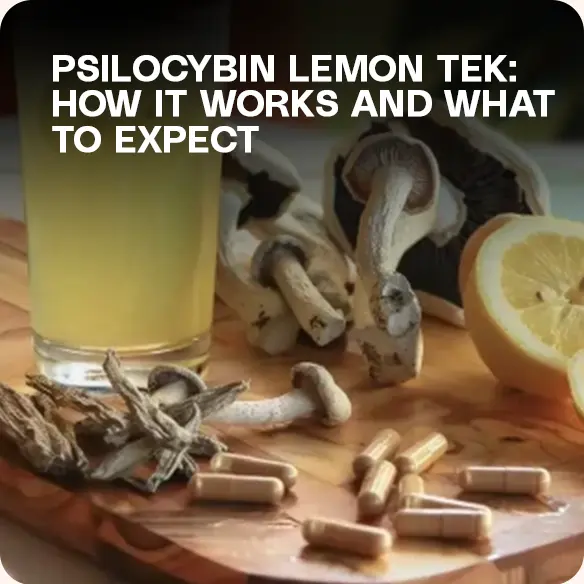Lizard King is a Psilocybe cubensis strain with a bit of mystery.
It’s been passed around by growers for years, but there are still a lot of people who don’t know about where it came from, how it grows, or what kind of trip it gives.
In this guide, we’ll break down the story behind Lizard King, what it looks like, how it compares to other strains, and whether it’s worth growing or trying.
If you’re curious about this cult favorite, here’s everything you need to know.
Who Was the Original “Lizard King”?
The strain is named after a Shroomery forum user who went by the nickname “Lizard King,” or LK for short.
He was an amateur mycologist from Georgia, known for hunting wild mushrooms and sharing photos, tips, and spore prints online in the early 2000s.
He’s the one who found the mushroom that later became the Lizard King strain.
He took it home, isolated it, and started trading it with others. Eventually, it got picked up by spore sellers and became a named strain.
The name itself is a nod to Jim Morrison of The Doors, who famously called himself “The Lizard King” in one of his poems.
LK took that name for his forum handle, and the mushrooms he found ended up with it too.
So while Morrison didn’t invent the strain, his nickname helped give it that iconic identity.
What Does the Lizard King Strain Look Like?
Lizard King mushrooms look like typical Psilocybe cubensis, but with a few differences.
- The caps are bronze to golden brown when fresh, fading to a lighter color as they dry. Some are slightly pointy in the center (called umbonate), while others are flatter.
- The stems are white to creamy, sometimes with a slight yellow tint, and they bruise blue when handled.
You’ll also notice that Lizard King grows tall, with long stems. Some grows even produce leucistic mushrooms—almost completely white with pale caps—though they’re still part of the same strain.
Overall, they look like standard cubensis, but they’re known for impressive size, tall stems, and blue bruising.
What Are the Effects and Characteristics of Lizard King Mushrooms?
Lizard King mushrooms are Psilocybe cubensis, so the effects are the same: visuals, laughter, and deep thoughts.
But some people say this strain feels a little warmer or more “heart-opening” than others.
There’s no hard evidence that Lizard King feels different from other cubensis strains in terms of chemistry. So far, lab tests haven’t shown a unique alkaloid profile that sets it apart.
What matters more is your dose, mindset, and setting—those will shape the trip more than the strain name.
How Potent Is the Lizard King Strain?
There’s no official lab data specifically on Lizard King potency, but it’s considered a medium-strength Psilocybe cubensis strain. That means:
- Psilocybin: Around 0.5% to 0.9%
- Psilocin: Around 0.1% to 0.2%
This puts it roughly in the same range as other common cubensis strains like Golden Teacher. It won’t blow your mind like Penis Envy or Tidal Wave, but it’s not weak either.
Some growers say Lizard King feels stronger than expected, especially when eaten fresh.
That’s likely due to preserved psilocin, which breaks down when dried. The environment, substrate, and how it’s handled all affect how strong each batch turns out.
In terms of trip quality, it’s often described as visual, gentle, and emotionally open—but again, that’s more about mindset, setting, and dose than the name itself.
If you’re new to Lizard King, treat it like any good cubensis: start with a low dose, especially if you’re using fresh mushrooms or haven’t tripped in a while.
How much should you take?
Like most cubensis, Lizard King dosage depends on your experience level.
- Microdose: 0.1g to 0.3g (dried)
- Low dose: 0.5g to 1g (good for beginners or light trips)
- Standard dose: 1.5g to 2.5g
- Strong dose: 3g to 4g+
- Fresh mushrooms: Multiply by 10 (e.g., 2g dry ≈ 20g fresh)
If it’s your first time with Lizard King, start lower than you think you need.
You can always take more—but you can’t go back once it kicks in.
Can You Grow Lizard King Mushrooms?
Yes. Lizard King is easy to grow and perfect for home cultivation. It grows fast, handles contamination well, and produces big flushes.
That’s why it’s a favorite among beginner and experienced growers alike.
What do you need to grow Lizard King?
You don’t need much to get started. Like most Psilocybe cubensis strains, Lizard King grows well using basic supplies. Here’s what you’ll need:
- Spores or liquid culture
- Grain jars (rye, popcorn, millet)
- Bulk substrate (coco coir, vermiculite, manure, or a mix)
- Monotub or grow bag
- Spray bottle, light source, and clean space
You can use PF Tek for smaller grows, but monotubs or bags will give you bigger yields. It’s up to you.
What conditions help it grow best?
Lizard King likes warm, moist conditions:
- Colonization temp: 75–81°F (24–27°C)
- Fruiting temp: 70–75°F (21–24°C)
- Humidity: Around 90–95%
- Light: A basic 12/12 light cycle or indirect daylight
- Airflow: Light fanning or passive airflow works well
It doesn’t need fancy tricks.
Just steady warmth, high humidity, and clean handling. It also resists contamination better than many other strains, which makes the whole process easier.
Are Lizard King Mushrooms Genetically Different?
Lizard King mushrooms are not genetically unique in any major way.
They’re part of the Psilocybe cubensis species, which means they share the same basic genetics as most other cubensis strains.
So far, lab studies haven’t found anything that sets Lizard King apart genetically from strains like Golden Teacher, B+, or Mazatapec.
What does vary is the genetics between individual grows or spore lines.
Even two grows of Lizard King might produce slightly different results depending on environment, genetics, and cultivation methods.
But overall, it’s still cubensis—and genetically similar to all the others.
What do lab tests show about cubensis strains?
Lab testing by companies like Triptomics has shown big differences in alkaloid levels even within the same strain. One grow of Lizard King might test at 0.6% psilocybin, while another might hit over 1.5%, depending on conditions.
So far, there’s no strong evidence that Lizard King consistently produces higher or lower levels than other cubensis.
What really matters is the specific genetics of the spores or culture you’re working with—not just the strain name.
Do minor compounds affect the trip?
Possibly. Besides psilocybin and psilocin, cubensis mushrooms also contain other compounds like:
- Baeocystin
- Norbaeocystin
- Norpsilocin
- Aeruginascin
These are called minor alkaloids. Some researchers believe they could subtly shape how the trip feels—maybe making it more visual, emotional, or body-heavy.
But we don’t know for sure yet.
Most trip differences still come down to dose, mindset, and environment—not tiny chemical differences between strains.
Conclusion
Lizard King mushrooms might come with a cool name and a fun backstory, but at the end of the day, they’re still Psilocybe cubensis.
They grow fast, produce big flushes, and can hit hard depending on how they were grown.
They’re beginner-friendly, easy to cultivate, and known for solid results whether you’re growing for personal use or just curious about new strains.
Potency can vary, but that’s true for almost every cubensis strain.
So, is Lizard King worth trying? Yes—if you like the idea of a strain with a little mystery and some solid grow traits.
Just remember, it’s not magic because of the name. Like all mushrooms, how it affects you depends on your dose, your mindset, and the environment you’re in.
If you’re growing or tripping with Lizard King, treat it like any cubensis—with respect, care, and clear intentions.





